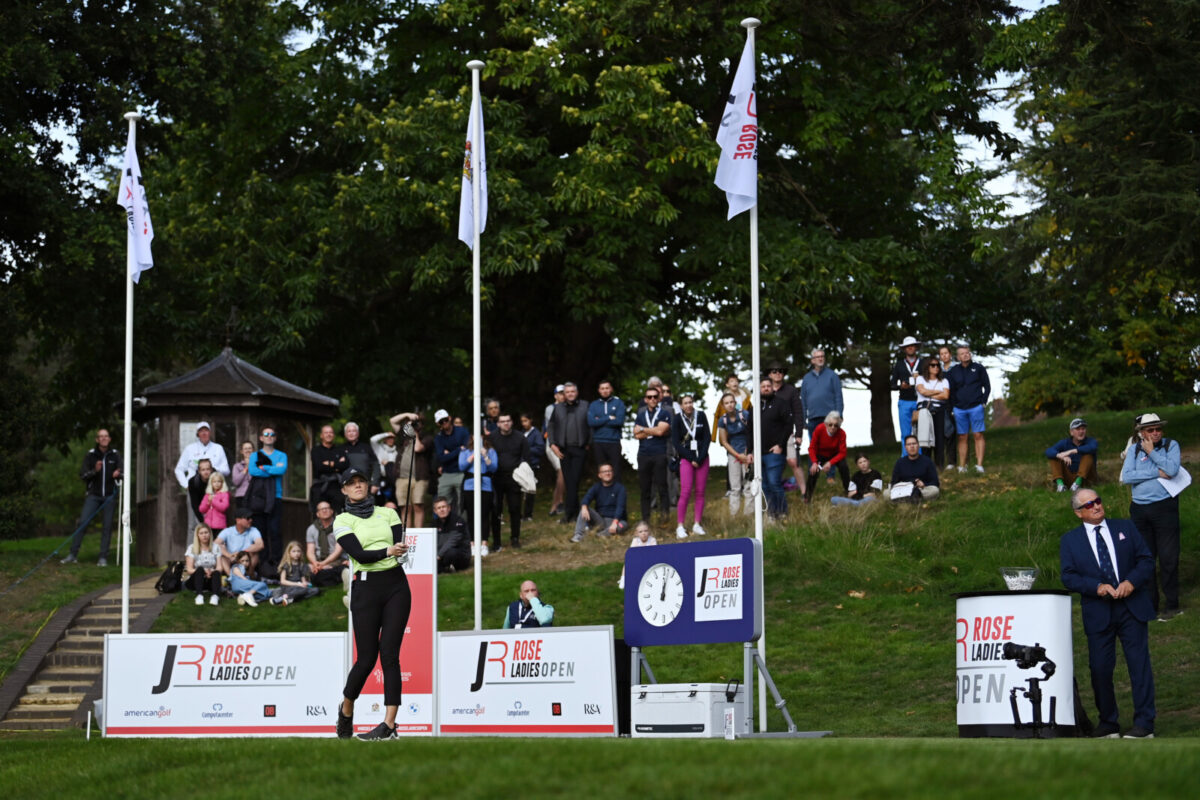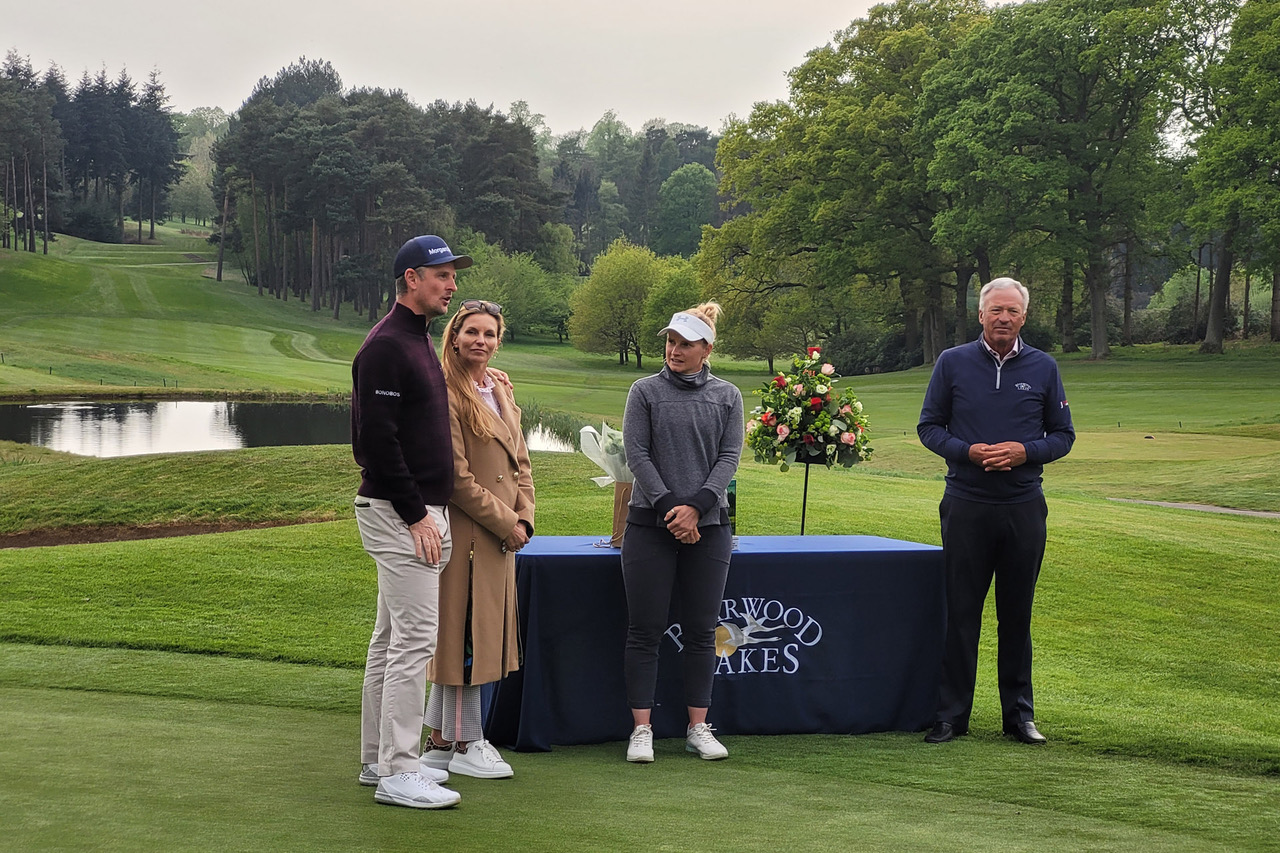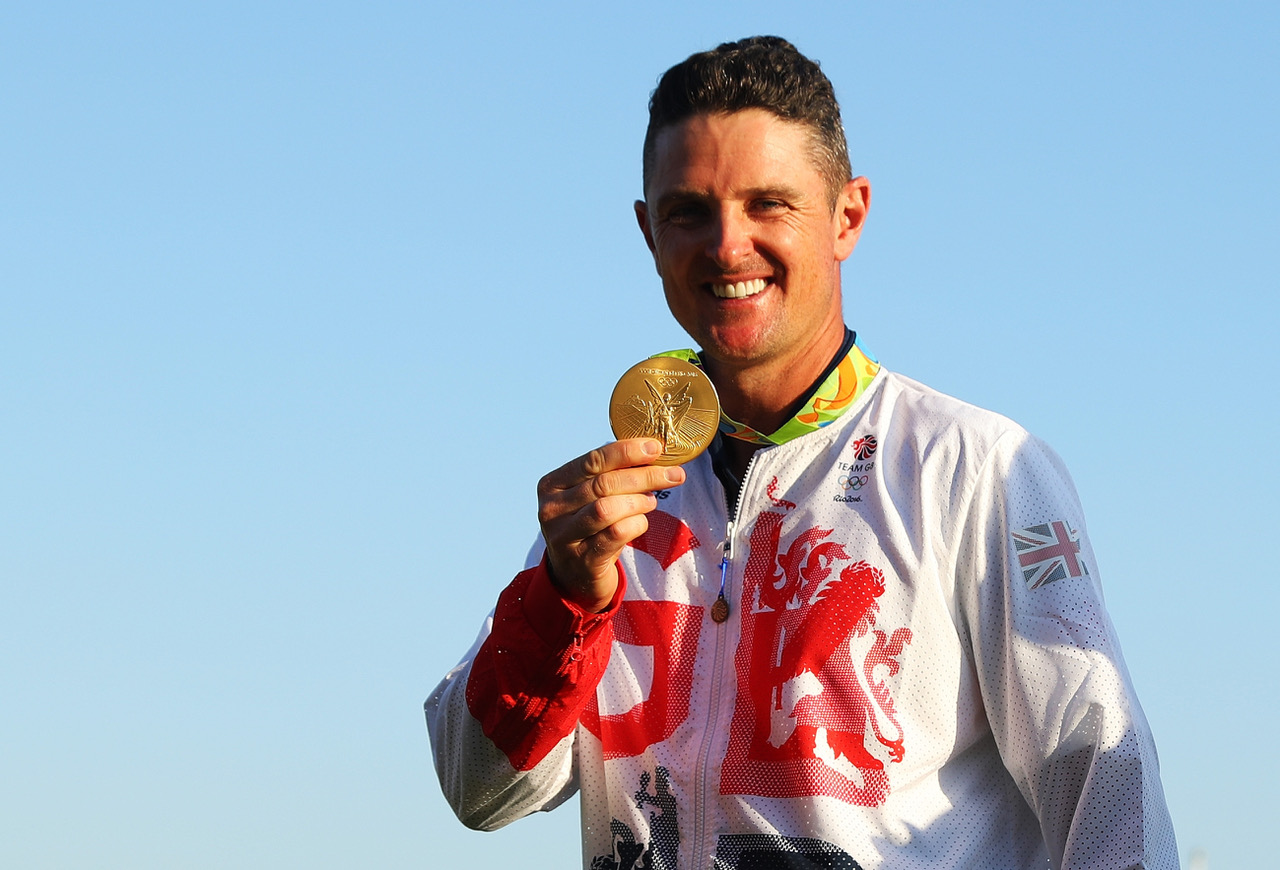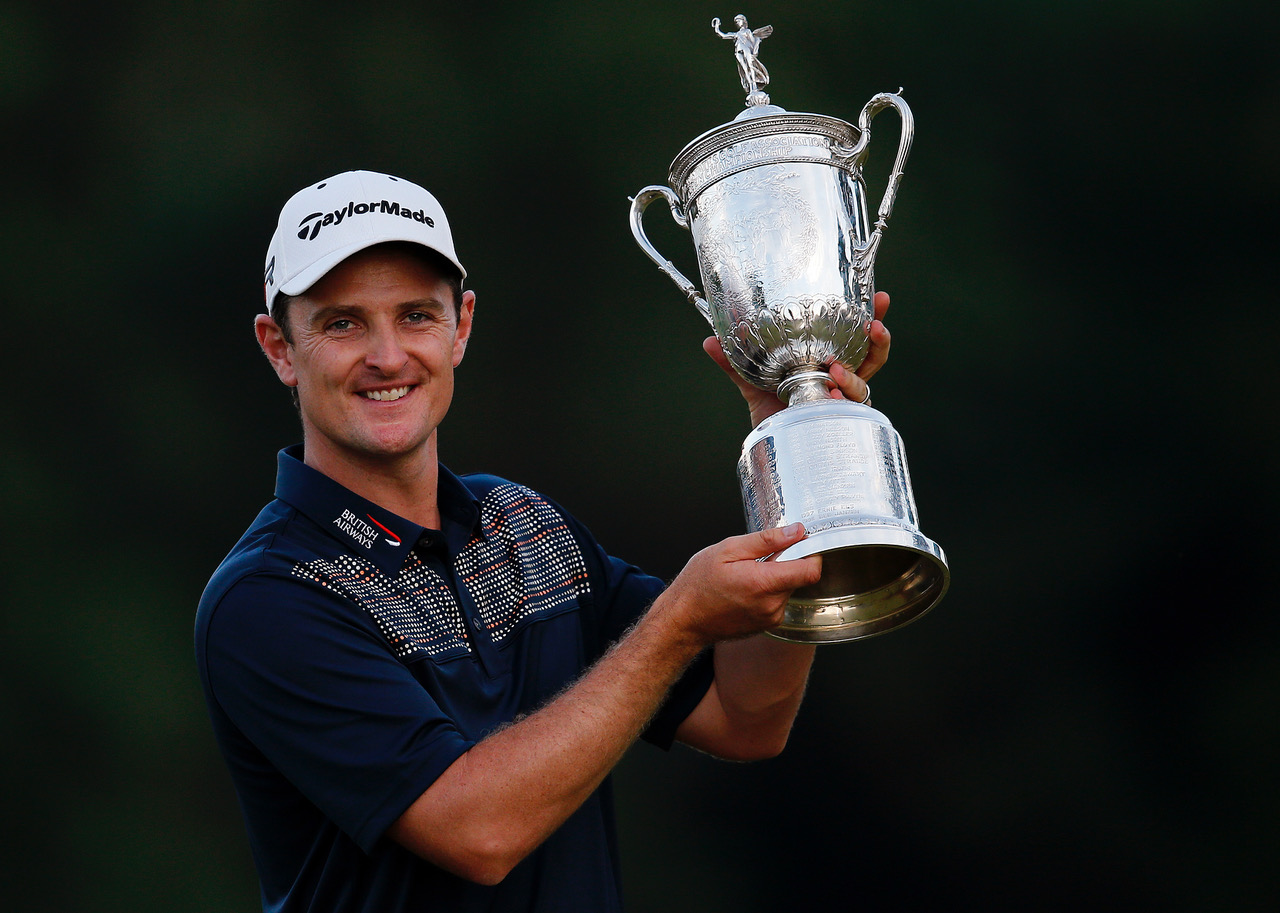Former world no.1 and Ryder Cup legend Justin Rose talks exclusively to Golf News about the decision he and his wife Kate made to support a series of events aimed at women professionals in the UK.
That came to be known as the Rose Ladies Series, and why they are continuing to champion creating competitive opportunities for women golfers through that series and the Rose Ladies Open, the third edition of which is taking place at Brocket Hall next month and missing out at Royal Troon in The Open.
The Rose Ladies Series obviously proved a vital lifeline for British women professional golfers when it launched in 2020. I think it was Liz Young that first got the ball rolling, but what prompted you and your wife, Kate, to get behind the venture?
It was when we heard about Liz Young’s idea of a roll up at her club during lock down that Kate picked up the phone to Liz to ask her what we could do to help.
This was our original motivation for starting the Series, to simply to give the female players the chance to still play competitively during the pandemic.
The fact that I was able to play a full schedule again after only a month out, but this wasn’t the same experience for the Ladies seemed unfair.
To be honest, at the start we saw it as simply a ‘stop gap’, something to help the ladies game and try to level things up at the time.
From there, it was clear there was a real disparity between the men’s and women’s Tours and the Series went someway to bridging this gap.
I guess it would have easy to have stepped away from it once things returned to normal, but you’ve continued to support the series under a new early season format. How important is it to continue to give young and emerging female professionals those competitive opportunities?
We will continue the Rose Ladies Series as long as there is demand for it, we review it each year and we have continued it because of the feedback we receive each year.
The players really appreciate the opportunity to play a condensed Series at the start of the Season; the timing works well because it fits in with the LETAS and LET schedules.
They enjoy having competitive events on home soil; the opportunity to play courses they might not normally have access to and also the chance to compete for the largest prize fund available for a one-day event (regardless of gender).
For a lot of the players, the Series acts as a warm-up ahead of the season starting in earnest and gives them the chance to play competitively.
A lot of the players are those just starting out on the LETAS, or regular Tour players wanting to gauge where their game is at ahead of the season to help with their training and preparation.
We also give invite spots to several of the top amateurs in the country through our partnership with both the R&A and England Golf, plus we give all our 12 junior golf finalists from the Justin Rose Telegraph Junior Golf championship invites to play in the events for experience, development and playing opportunities.
As well as the opportunity to play competitively, the RLS gives players the chance to be seen and receive the exposure they deserve, which is one of our key objectives in raising awareness and support of the female game.

What is the Rose Ladies Series’ relationship with the LET’s Access Series and what is your long-term commitment to supporting the series?
We created the Rose Ladies Open to give the female professionals a tournament in the UK, so another opportunity to play competitively; opportunities to be seen and receive the exposure they deserve.
Initially a lot of people were confused and thought the Rose Ladies Open was the Grand Final of the Rose Ladies Serie because of how it was structured at the start.
However, the Rose Ladies Open is a completely separate event to the Series, it is a three-day tournament including a pro-am, and it is a stand-alone event on the LETAS.
The Rose Ladies Open has enabled us to provide a genuine pathway to the Ladies European Tour – our 2023 champion Chiara Tamburlini is testament to this – she made a fantastic start to her debut LET season with a win at the Joburg Ladies Open in April.
What made you choose Brocket Hall as the venue to host the Rose Ladies Open? Is there anything specific about the course or the set up at the club that makes it a great tournament venue?
Brocket Hall has been the tournament venue for the past two years and we return again in 2024, the course has proved a worthy test for the players each year and is in great condition currently, we are looking forward to seeing how the players get on in September.
Will you be hosting coaching clinics and presenting the trophy as per previous years?
I will be hosting a junior golf clinic again for competitors from the Justin Rose Telegraph Junior Golf Championship and some local Girl Guides, we had a lot of fun and a great turn out last year, so I’m looking forward to seeing all the juniors again this year.
Both Kate and I will be there on the final day. We enjoy meeting the players, having a chance to speak to them and get feedback.
We also love being there for the finish to congratulate the champion and present them with the trophy.

Switching tack, it was great to see Tommy Fleetwood challenge for the gold medal in Paris, ultimately coming away with a silver medal. Looking back to 2016 in Rio, where does winning your gold medal rank among your career achievements?
Winning gold in Rio in 2016 was an incredible experience. The medal sits alongside the US Open trophy in my cabinet.
It was cool to be exposed to a wider audience and feel like you were representing something bigger than yourself, similar to the Ryder Cup.
It was great to tune in on Sunday and see Tommy come so close; you could see how much it meant to him. I cherish those feelings greatly.

You came pretty close to adding a second major title to your CV at The Open at Troon. It was obviously tough to get pipped by Xander Schauffele, but how do you look back at your performance that week?
That Open week proved I can still compete against the best players in the world. Conditions weren’t easy at times, and you had to go to another level to manage and persevere through them, and I’m really happy with the way I handled that.
I do feel like I left everything out there, but Xander played unbelievable golf on the Sunday and deserved to win.
It has given me something to build on for the FedEx Play-offs, the rest of the DP World Tour season, and into the 2025 season. The T2 finish gets me into all four Majors next year, so I can lock in those weeks to try and go one better than The Open this year.

Given that you were 66th in the world ranking, I’m sure a lot of people were surprised that you had to pre-qualify for The Open. How important was it to keep your run of appearances in The Open going, and how relieved are you that you won’t have to go through all that again next year?
Obviously, Open qualifying wasn’t the ideal way to get into The Open, but it was a no-brainer for me to try and qualify that way.
It was great to be back at Burnham and Berrow, where I had won the Carris Trophy in 1995, so it was a bit of a nostalgic trip for me.
But it was more than just qualifying for The Open; it was about giving myself the chance to win it.
It reminded me not to take these Major championships for granted, and I’ll remember that as I go into The Open and the other Majors next year for sure.
This was your 21st Open Championship. Of all the Majors, the stats show that it has been the least successful for you in terms of results, with two runner-up finishes and two other top 10s. Do you feel like The Open has been the tougher of the four Majors for you, and if so, what do you put that down to?
Look, it’s hard to say. I love The Open; it’s my favourite Major, it’s the one I really want to win. I think I proved to myself at Troon that I have the ability to win it.
The Open tends to have the toughest conditions of the four Majors, and those who manage the conditions the best tend to find themselves in contention.
I think that Saturday round was crucial to me in that sense. The conditions were the worst they’d been all week, but I managed to grind really hard and keep inching my way forward in the tournament, whereas others let the conditions get the better of them and fell away from contention.
So, I’ll definitely take that forward to try and go one better next year.

Finally, it seems like amateur players are coming out of the gate, mainly via the US college system, ready to win top-level Tour events these days. Given your time again, is that something you might have considered, or was it always the plan to give college a miss and throw yourself straight into the pro game?
The US college system is unbelievable; it’s churning out world-class talent with ease. The likes of Collin Morikawa, Viktor Hovland and, more recently, Ludvig Aberg, have all come out of college not only ready to compete on the PGA and LPGA tours, but at Majors and Ryder Cups as well.
I also think the women’s game is benefiting hugely from the college system. Someone like Rose Zhang was a superstar before she had even made her professional debut; then she won her first event on tour, represented Team USA in the Solheim Cup, and now at the Olympics.
I think it is absolutely something all young golfers should seriously consider. The colleges have great coaches and facilities that really raise the game of young golfers and prime them to become elite professionals.
Rose Ladies Open @ Brocket Hall, September 6-8
This year’s Rose Ladies Open has attracted a full field of 108 players from all over the UK and Europe who will take on the Melbourne Course over three days from September 6-8.
Justin and Kate Rose will be presenting the trophy to the tournament winner on the Sunday afternoon following conclusion of play.
For more information on the LET Access Series’ Rose Ladies Open and to register for free tickets to attend any or all of the tournament rounds, and for details of great value hospitality packages, please visit roseladiesopen.co.uk.



